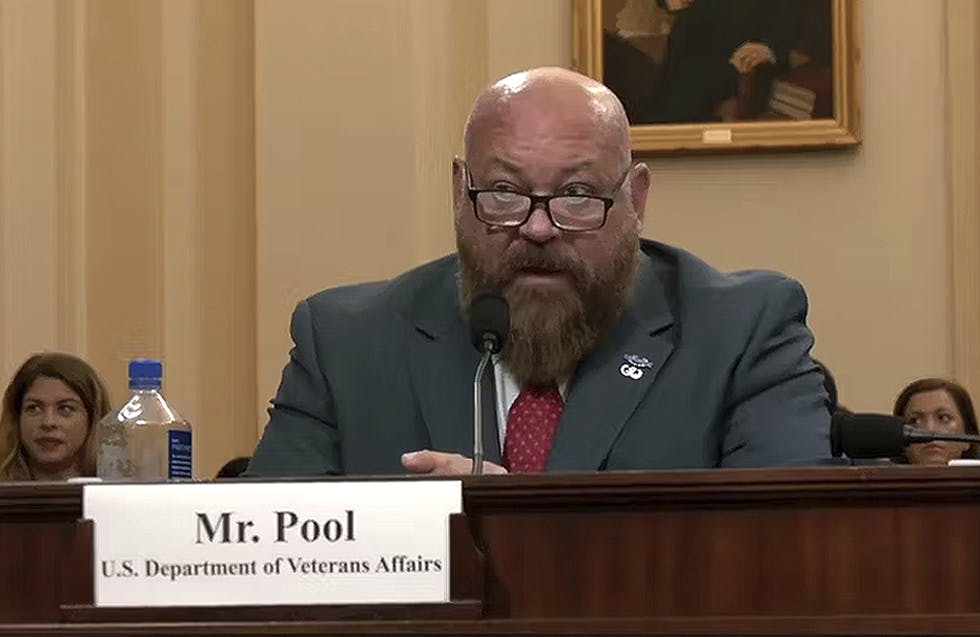AI, Data Sharing Drive Adult Protective Service Reporting at HHS
The Administration for Community Living is leveraging data to train AI algorithms that deliver a greater insight into adult mistreatment research and predictions.

The Administration for Community Living, the organization under the Department of Health and Human Services that supports communities of older adults as well as those with disabilities, is using artificial intelligence and machine learning to identify risks of adult mistreatment and predict maltreatment.
Doing so involves collaborating across groups and leveraging multiple data sources and data sets, including information that already existed, to develop algorithms and dashboards that ultimately drive decision-making.
“When you’re dealing with technology issues that broadly address issues of data and tools like AI, having a working group mitigates against the risks that are arising, regarding the impact of bias on machine learning,” said Scott Cory, CIO at the organization, during an ACT-IAC community of interest meeting earlier this month.
In conducting the research, Cory noted that the agency focused on identifying data sets that specifically looked at what information was available around abuse, neglect and exploitation, as well as potential risk factors. The National Adult Maltreatment Reporting System enabled ACL to know where cases of abuse, neglect and maltreatment have been reported, which provided a foundational set of data.
Cory’s team had to take a closer look at the data before it influenced the development of ACL’s algorithm.
“We were really concerned about the sources of data. We took additional steps to ensure the data was clean to allow homogeneity,” Cory said.
The group chose machine-learning algorithms to parse the data for potential risks. The agency also had subject matter experts review the results and make adjustments to provide confident outcomes. Following the review and results, the team leveraged data visualization tools to create understandable models that drive decision-making.
“We anticipate that this work may create algorithms that may have greater use at the state and local level than it would at ACL. The outcomes of this specific project were different than we expected and different areas where the benefits accrue,” Cory said. “We will continue to look at county-level data based to identify value within the county as a geographical unit of identifying potential risk factors.”
Following the initial results, Cory added that ACL will leverage data from the Centers for Medicare and Medicaid Services tied to adult protective service information.
“This data would allow us to ascertain whether or not there are patterns in payment and engagement that can be related to adult protective services,” he noted.
ACL will partner with CMS and the Centers for Disease Control and Prevention to understand adult abuse, neglect and maltreatment. It will be the first time the agency uses CMS data to do so, Cory said.
“This is work the ACL cannot do alone. The nature of our relationships with our grantees doesn’t provide us with the information we need to effectively do this. It requires ongoing and consistent efforts with our partners, CMS and CDC,” Cory said. “We’re always looking for opportunities to partner with organizations that are willing to work with us.”
This is a carousel with manually rotating slides. Use Next and Previous buttons to navigate or jump to a slide with the slide dots
-

Doing More with Less is Muscle Memory for IRS, Former Deputy CIO Says
Darnita Trower discusses her experience, the legacy she’s left behind and how she pushed the IRS to modernize itself,
20m watch -

Opinion: Original Intelligence Is the Missing Piece for AI Transformation
Limitations of AI agents and development drive growing needs for workforce development and "original intelligence."
3m read -

VA CIO Targets Modern IT and Smarter Workforce Alignment
Agency leaders told lawmakers they are focused on trimming legacy systems and restructuring its workforce to streamline operations.
3m read -

Pentagon's $200M AI Contracts Signal Broader Effort to Transform Talent
The Army is leveraging Silicon Valley, reservist programs and new hiring strategies to integrate critical digital skills in its ranks.
5m read -

AI Foundations Driving Government Efficiency
Federal agencies are modernizing systems, managing risk and building trust to scale responsible AI and drive government efficiency.
43m watch -

Inside DOD’s Push to Grow the Cyber Workforce Through Academia
Diba Hadi gives her first interview since becoming principal director of the DOD’s Cyber Academic Engagement Office.
15m listen -

Agencies Tackle Infrastructure Challenges to Drive AI Adoption
Federal agencies are rethinking data strategies and IT modernization to drive mission impact and operational efficiency as new presidential directives guide next steps.
5m read Partner Content -

Generative AI Demands Federal Workforce Readiness, Officials Say
NASA and DOI outline new generative AI use cases and stress that successful AI adoption depends on strong change management.
6m read -

The Next AI Wave Requires Stronger Cyber Defenses, Data Management
IT officials warn of new vulnerabilities posed by AI as agencies continue to leverage the tech to boost operational efficiency.
5m read -

Federal CIOs Push for ROI-Focused Modernization to Advance Mission Goals
CIOs focus on return on investment, data governance and application modernization to drive mission outcomes as agencies adopt new tech tools.
4m read -

Fed Efficiency Drive Includes Code-Sharing Law, Metahumans
By reusing existing code instead of rewriting it, agencies could dramatically cut costs under the soon-to-be-enacted SHARE IT Act.
5m read -

Agencies Push Data-Driven Acquisition Reforms to Boost Efficiency
New initiatives aim to increase visibility of agency spending, improve data quality and create avenues to deploy solutions across government.
5m read
















